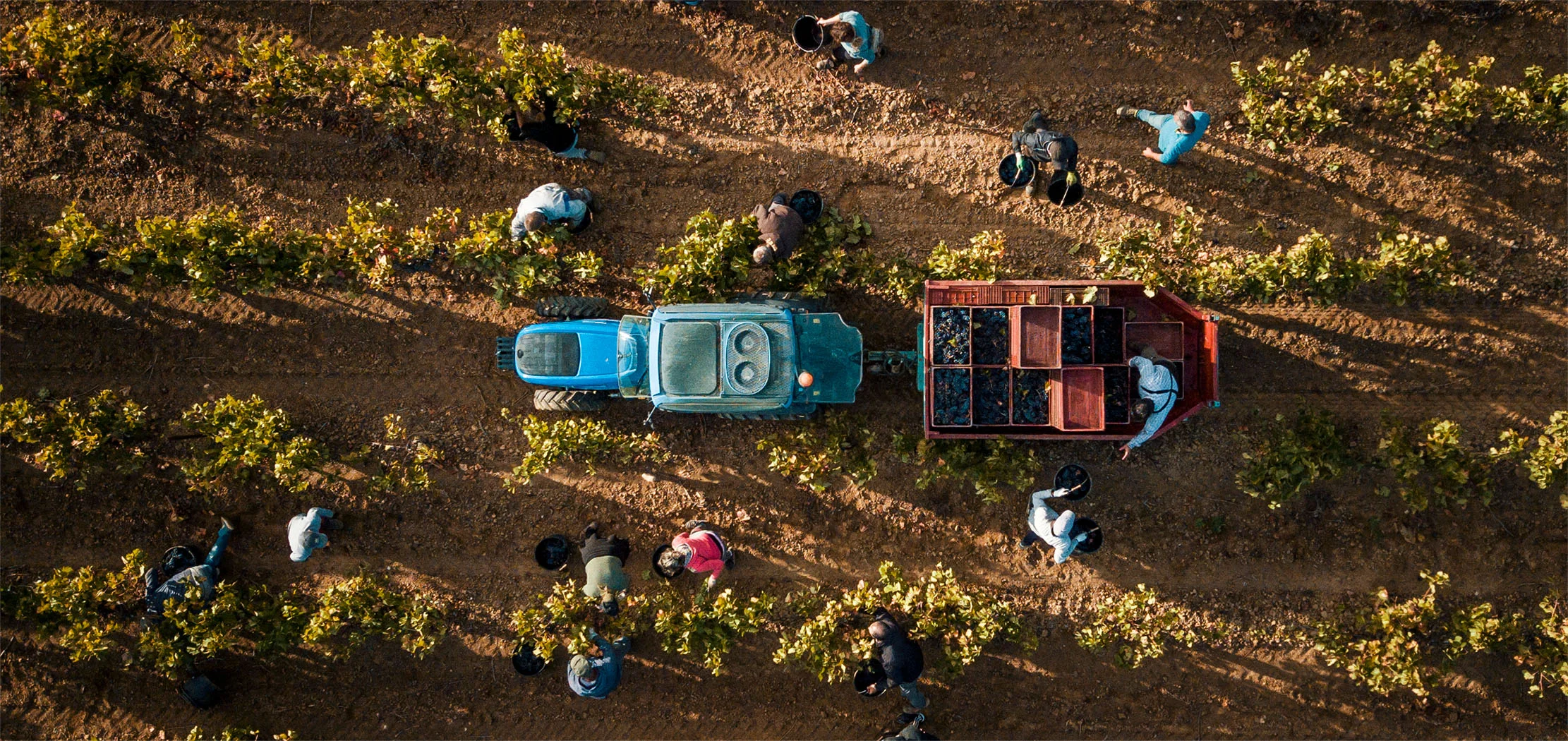Discover
Discover
La Clape
La Clape is located in the Aude, near Narbonne in the heart of the Narbonnaise Regional Natural Park. This ancient Roman island is recognized as the largest classified natural site in the Languedoc (Natura 2000).
The appellation has retained the raw, wild and moving beauty of its island origins. The vine has blossomed there as a queen, as it loves the sun and the light.
A classified environment
Characterized by small, winding, steep-sided, marly valleys ending abruptly in cliffs on the Mediterranean side, the landscape of La Clape is in stark contrast to the surrounding plains. It has been a state-classified site since 1973, for its outstanding natural beauty and its exceptional fauna and flora. Situated in the Narbonne regional natural park, it has also been recognized as a Natura 2000 site by the European Union for its natural habitats and remarkable species, a Sensitive Natural Space by the Aude department and is partly owned by the Coastal Conservatory. In addition to exceptional environmental challenges, here vines act as natural firebreaks and certain parts of the vineyard have been especially planted with this in mind, as part of a concerted effort.
Agro-ecological initiatives
With the support of the Narbonne Regional Natural Park, several agro-environmental initiatives have been taken in the AOC La Clape vineyard. The wine-makers signed the Natura 2000 charter, thus undertaking to sustain the environment and maintain the wealth of natural habitats that characterize the massif. The program imposes such measures as reducing the use of phytosanitary products. Some estates even practice agro-pastoralism, which is set to develop more widely in the coming years.
Since 2015, a herd of 400 sheep nibble the grass between the vines during the 4 months of winter, thus naturally enriching the soil.
Furthermore, research and training programs will be increased in order to encourage responsible agriculture. More than a quarter of the estates are practicing organic agriculture or are in the process of converting.
Lastly, the La Clape wine-makers want to create a GIEE (an economical and environmental group) to facilitate adaptation to climate change and to better anticipate water preservation.

Our key numbers
Production surface area:
778 hectares
Production area:
6 communes
Number of producers:
30 Caves
Annual production:
26 450 hl
Average yield:
42 hl/ha
Colours:
Red, White
Discover our history
Known for a long time as the Insula Laci, due to its numerous lakes, the remains of which can be observed now as basins, the La Clape massif was, over six hundred years ago, a steeply wooded island, the largest of the Aude delta archipelago.
Between the first and thirteenth centuries, the sea came up as far as Narbonne and beyond to the east: in 150 ad, Narbonne was a port and La Clape an island.
However, with climate change the Aude frequently flooded and the land encroached on the sea thanks to alluvium washed down from the Pyrennees via the Aude river. It was not until the fourteenth century that the La Clape massif became a natural part of the continent, at the same time becoming deforested and thus accentuating its erosion. Since then it bears its name, which means, “pile of stones” in Occitan.
The vineyard, which is beaten by the tramontane wind, gets its uniqueness from its creviced limestone soil. This along with a maritime Mediterranean climate encourages a vast biodiversity and gives the wines great freshness, minerality and class.
Red Wines
Main grape varieties: grenache, mourvèdre, syrah.
Complementary grape varieties: carignan, cinsault.
- Grenache must represent at least 20% of the area claimed in the appellation
- All the main grape varieties must represent at least 70% of the area claimed in the appellation.
- A blend of at least two main grape varieties is mandatory.
White Wines
Main grape varieties: white bourboulenc, white clairette, white grenache, white piquepoul, white marsanne, white roussanne, white rolle.
Complementary grape varieties: white maccabeo, white terret.
Accessory grape variety: viognier (limited to 10%)
- Bourboulenc must represent at least 40% of the area claimed in the appellation.
- The Grenache Blanc / Bourboulenc grape varieties must represent at least 60% of the total.
- A blend of at least two main grape varieties is mandatory.